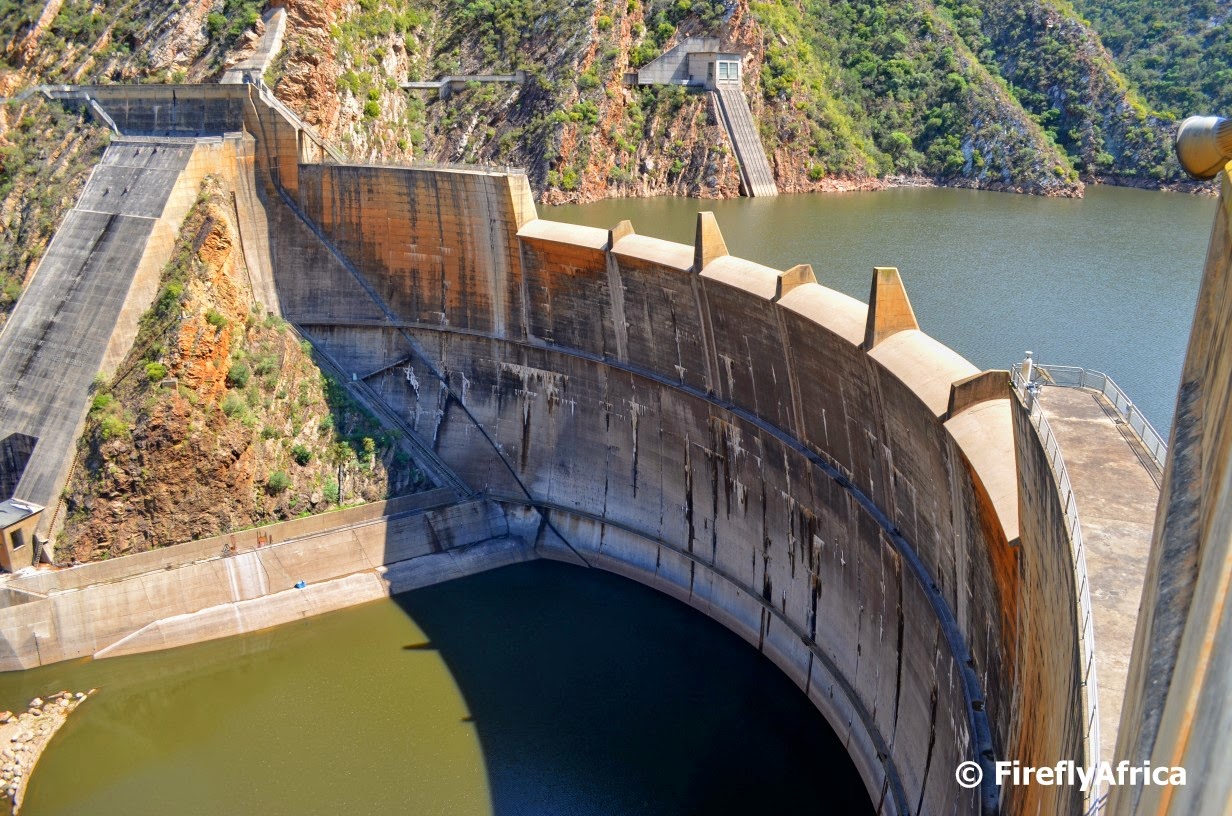How often do you wonder where exactly the water in your tap and fruit and vegetables in your kitchen comes from? We’ll, if you live in Port Elizabeth its possible to answer both these questions for yourself by visiting the Gamtoos Valley. The Gamtoos Valley is often referred to as the food basket of the Eastern Cape as it is one of South Africa’s biggest citrus and vegetable producing areas. The farms get their irrigation water from exactly the same place we get our drinking water from, the Kouga Dam.
The dam is a double curve arch dam with an 82 m high wall and storage capacity of 128,7 million m3. The catchment area is inside the Baviaanskloof Wilderness Area from where the Kouga River carries the water into the 34 km long dam basin. Other than for water supply the dam was also built as a flood control mechanism to lessen the impact of a flood on the lower Gamtoos River. Visitors can get right up to the point where I took the photos from for a view of the dam and dam wall with it becoming an even more exceptional sight when the dam overflows.
Water is taken from the Kouga Dam to the Loerie Dam via a main canal while irrigation water for the farms in the valley is distributed by means of a series of canals and pipelines. 7400 ha of scheduled ground are irrigated with every irrigator being supplied with at least one draw-off with a self registering meter. These are then operated by the farmers themselves according to their needs and up to a maximum limit of 8000 m3 per ha per year.
And this is where the irrigation water goes. Citrus orchards like this and fields of potatoes and other vegetables. The Gamtoos Valley is the ideal breakaway for city folk in the Port Elizabeth area. The area offers beautiful scenic views, fresh air, lekker food, genuine farm stalls and real wholesome country living hospitality, with most guest houses and B&B’s situated on working farms.




Vier-en-'n-half-jaar gelede was die Kougadam so vol… Julie 2018, is daar omtrent 9% water in die dam.